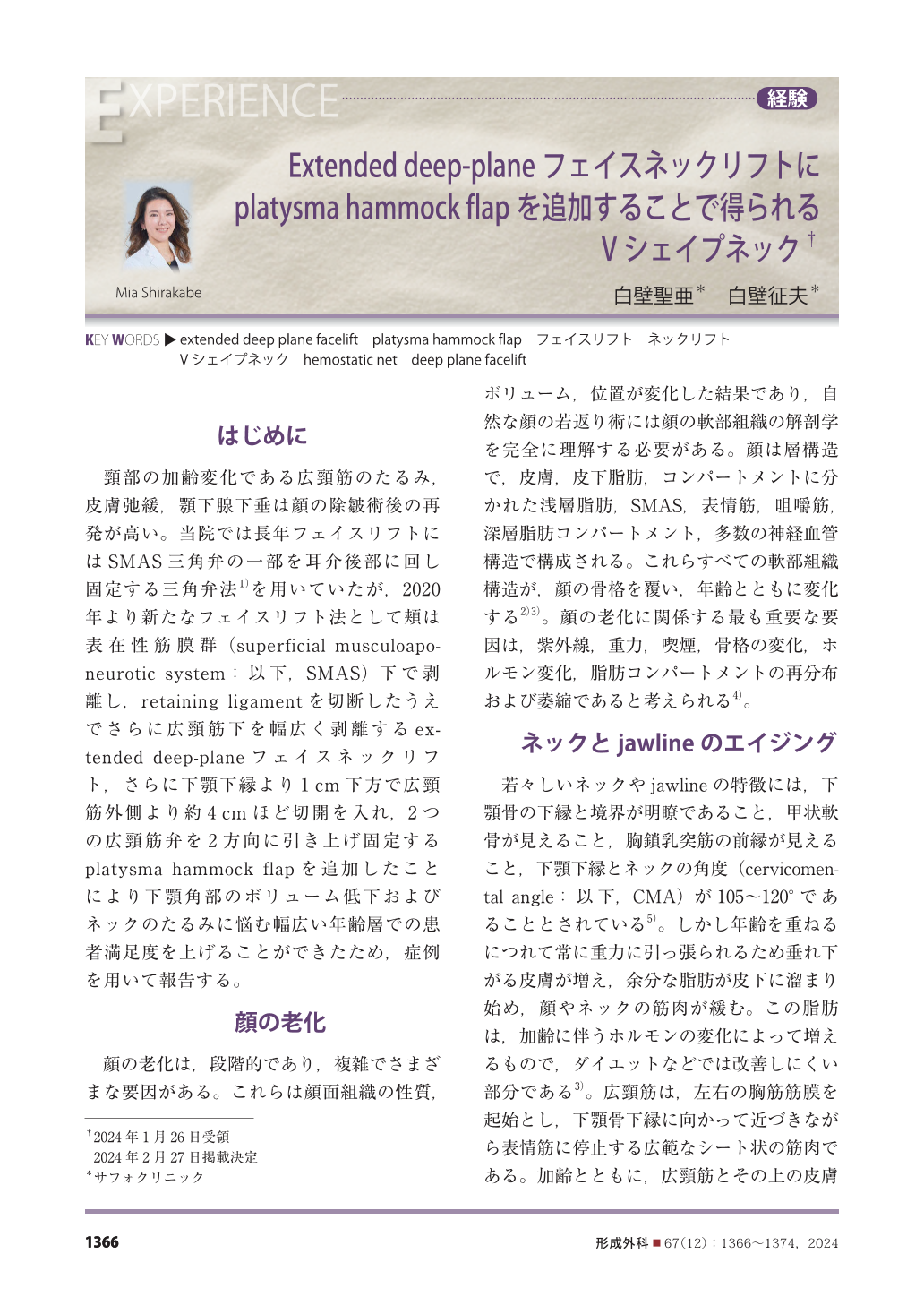Japanese
English
- 有料閲覧
- Abstract 文献概要
- 1ページ目 Look Inside
- 参考文献 Reference
はじめに
頸部の加齢変化である広頸筋のたるみ,皮膚弛緩,顎下腺下垂は顔の除皺術後の再発が高い。当院では長年フェイスリフトにはSMAS三角弁の一部を耳介後部に回し固定する三角弁法 1)を用いていたが,2020年より新たなフェイスリフト法として頬は表在性筋膜群(superficial musculoaponeurotic system:以下,SMAS)下で剥離し,retaining ligamentを切断したうえでさらに広頸筋下を幅広く剥離するextended deep-planeフェイスネックリフト,さらに下顎下縁より1 cm下方で広頸筋外側より約4 cmほど切開を入れ,2つの広頸筋弁を2方向に引き上げ固定するplatysma hammock flapを追加したことにより下顎角部のボリューム低下およびネックのたるみに悩む幅広い年齢層での患者満足度を上げることができたため,症例を用いて報告する。
The sagging of the platysma muscle, skin laxity, and submandibular gland ptosis, all of which are characteristic manifestations of aging changes in the neck region, contribute to a high recurrence rate following facial rejuvenation procedures. We had historically used the triangular flap technique, anchoring a portion of the superficial musculoaponeurotic system (SMAS) triangle behind the ear in face/neck lift surgeries, but since 2020 we have applied a novel approach: in the extended deep-plane face/neck lift, the cheek is detached beneath the SMAS layer, and the retaining ligament is severed, allowing for a more extensive dissection beneath the platysma muscle. For the neck lift, an incision is made approx. 1 cm below the mandibular border and 4 cm lateral to the outer edge of the platysma muscle, followed by the addition of the platysma hammock flap, which involves lifting and securing two portions of the platysma muscle in two directions. This innovative modification effectively addresses volume loss in the mandibular angle region and neck sagging, leading to increased patient satisfaction across a broad age range. We present cases that illustrate the successful outcomes achieved with this combined technique.

Copyright© 2024 KOKUSEIDO CO., LTD. All Rights Reserved.


